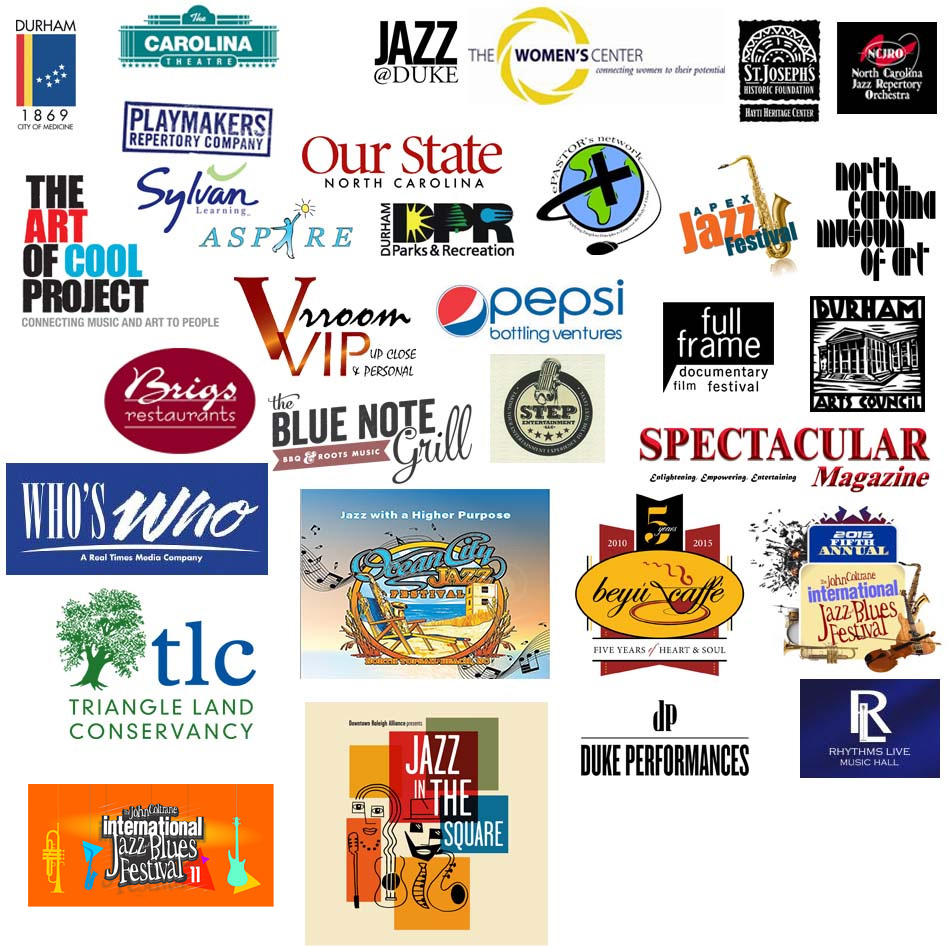Author Archive
Friday, January 20th, 2012
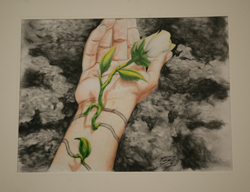 The North Carolina Central University Art Museum is once again showcasing the work of Durham’s best and brightest young artists. “Durham’s Finest,” an annual exhibit of art created by Durham Public Schools students, will open on Sunday, Jan. 22, at 2 p.m. The North Carolina Central University Art Museum is once again showcasing the work of Durham’s best and brightest young artists. “Durham’s Finest,” an annual exhibit of art created by Durham Public Schools students, will open on Sunday, Jan. 22, at 2 p.m.
“Durham’s Finest” comprises works by 220 students in kindergarten through 12th grade. “This unique show is the school system’s only district-wide art exhibit,” said Mary Casey, director of K-12 arts 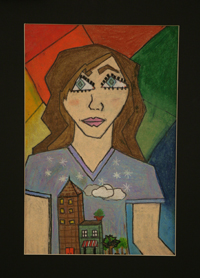 education for the school district. “It shows the progression and artistic development of the students.” education for the school district. “It shows the progression and artistic development of the students.”
At a reception on Sunday, Casey and Kenneth Rodgers, director of the art museum, will present awards to several student artists. “Hosting the exhibit allows the museum to give students the rare opportunity to see their artwork in a real museum setting,” said Rodgers. A string quartet from Jordan High School, under the direction of Wendy Davidson, will perform. The exhibit will run until Feb. 10.
The NCCU Art Museum is open Tuesday through Friday from 9 a.m. to 4:30 p.m. and Sundays from 2 to 4 p.m. For more information, call the NCCU Art Museum at 530-6211. Admission is free.
Image #1: “Ascending to Heaven” by Brandon James
Southern High School, Grade 12
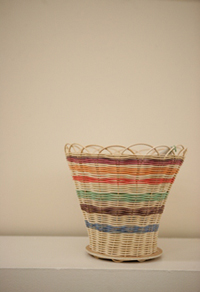 Image #2: “City Girl” by Autumn Mullin Image #2: “City Girl” by Autumn Mullin
Brogden Middle School, Grade 7
Image #3: “Woven Reed Basket” by Portia McPhatter
Hillandale Elementary School, Grade 4
Posted in Public Affairs | 9 Comments »
Thursday, January 19th, 2012
A section of the F.W. Woolworth & Co. lunch counter at which sit-in protests took place in Durham in 1960 will be rededicated in a ceremony at North Carolina Central University on Sunday, Feb. 5, in one of a series of Black History Month observances at the university.
The anti-segregation sit-ins in downtown Durham began Feb. 8, 1960, following by one week the similar protests in Greensboro. The Durham campaign was organized by the NAACP chapter at North Carolina College (now NCCU), led by students Lacy Streeter, Callis Brown, Robert Kornegay. Also taking part were students from the Bull City Barber College, DeShazor’s Beauty College and Hillside High School.
The protests caught the attention of Dr. Martin Luther King Jr. and the Rev. David Abernathy. At the request of the Rev. Douglas Moore, a local civil rights leader, the two national leaders came to Durham and visited the Woolworth’s lunch counter on Feb. 16. The store closed the counter after the sit-in demonstrations, and the students continued the protests at other stores.
On the evening of Feb. 16, Dr. King drew a standing-room crowd at White Rock Baptist Church, where he delivered his famous “Fill up the jails” speech, in which he advocated nonviolent confrontation with segregation for the first time in the South.
The Woolworth store closed in 1994, but the lunch counter was saved from salvage collectors by John Friedrick, then executive director of the N. C. School of Science and Mathematics. A portion of the counter was donated to NCCU in June 1999. Last fall it was moved from its previous location in the William Jones Building to the James E. Shepard Memorial Library, where it will be the centerpiece of a permanent civil rights movement exhibit.
The rededication event on Feb. 5 will be at the Shepard Library starting at 3 p.m. It will begin with a panel discussion, “Looking Back While Moving Forward,” moderated by Dr. Freddie Parker, professor of history at NCCU and chair of the N.C. African-American Historical Commission.
The discussion panelists will be Dr. Courtney S. Ferguson, a retired NCCU business professor; Vivian McCoy, a civil rights and community activist; Virginia Williams, who as a teenager participated in the Royal Ice Cream Parlor sit-in in Durham in 1957, one of the first such civil rights protests; and NCCU student leader Cassandra S. Stokes. The dedication ceremony and a reception will follow.
Posted in Public Affairs | 8 Comments »
Wednesday, January 11th, 2012
Congratulations to the NCCU Jazz Combos and Brass Ensemble. Music from their latest CD Slightly Blued made the playlist for the nationally syndicated and highly regarded radio show “Jazz After Hours.” In addition, the CD has been added to playlists of jazz stations in major metropolitan areas, including Atlanta, Detroit, Miami, Orlando and Boulder, Colo.
Posted in Music News | 6 Comments »
Sunday, January 8th, 2012
 Every Tuesday at 8pm Every Tuesday at 8pm
Planetary Radio, the weekly half-hour series about space exploration, has been available since Tuesday, July 20, 2004, the thirty-fifth anniversary of the Apollo 11 moon landing.
It’s the only long form public radio program devoted to the final frontier. Along with top-flight production quality, every episode relies on the deep expertise of the Planetary Society, founded by Carl Sagan, Lou Friedman and Bruce Murray. We are committed to the high standards your audience expects and deserves.
Whether it’s the launch of Burt Rutan’s SpaceShipOne or the arrival at Saturn of the huge Cassini probe, Planetary Radio is there. We also feature conversations with the men and women who lead the way, from Buzz Aldrin to Arthur C. Clarke, along with the scientists and engineers who provide unique perspectives on the quest for knowledge about our universe. Other regular features like “What’s Up!” raise your space IQ while putting a smile on your face. And you just might win their weekly space trivia contest.
 Every Tuesday at 8:30pm Every Tuesday at 8:30pm
Cambridge Forum is a lively half-hour program dealing with the issues and ideas shaping contemporary society. Programs feature prominent scholars, writers, and artists engaging in a stimulating and focused exchange with a challenging audience representing diverse points of view. Discussions are recorded live in Harvard Square, a veritable marketplace of ideas. Recent programs examined topics related to the ecological imagination, the state of public schools left, the decline of the middle class, Bob Dylan’s poetry, the history of baseball and the contribution to peace made by artists. Speakers have included cultural critic Christopher Ricks on “Bob Dylan: Artist,” educator Jonathan Kozol discussing “Children in the Years of Hope,” poet Mark Doty exploring “Objects and Intimacy,” and economist Robert Reich addressing “Who Benefited from the 90s Boom?”
Posted in Music News | 7 Comments »
Sunday, January 1st, 2012
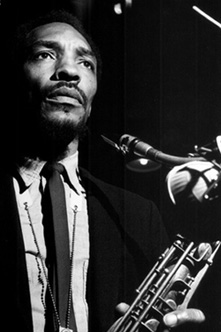 Few, if any, free jazz saxophonists have approached music with the same degree of intellectual rigor as Sam Rivers; just as few have managed to maintain a high level of creativity over a long life. Rivers plays with remarkable technical precision and a manifest knowledge of his materials. His sound is hard and extraordinarily well-centered, his articulation sharp, and his command of the tenor saxophone complete. Rivers’ playing sometimes has an unremitting seriousness that can be extremely demanding, even off-putting. Nevertheless, the depth of his artistry is considerable. Rivers is as substantial a player as avant-garde jazz has produced. Few, if any, free jazz saxophonists have approached music with the same degree of intellectual rigor as Sam Rivers; just as few have managed to maintain a high level of creativity over a long life. Rivers plays with remarkable technical precision and a manifest knowledge of his materials. His sound is hard and extraordinarily well-centered, his articulation sharp, and his command of the tenor saxophone complete. Rivers’ playing sometimes has an unremitting seriousness that can be extremely demanding, even off-putting. Nevertheless, the depth of his artistry is considerable. Rivers is as substantial a player as avant-garde jazz has produced.
Rivers’ father was a church musician, touring with a gospel quartet. Rivers was raised in Chicago and then Little Rock, AR, where his mother taught music and sociology at Shorter College. He began taking piano and violin lessons at about the age of five. He later played trombone, before finally settling on the tenor. Early favorites were Don Byas, Coleman Hawkins, Lester Young, and Buddy Tate. Rivers moved to Boston in 1947, where he studied at the Boston Conservatory of Music and, later, Boston University. There, he played in Herb Pomeroy’s little big band, who, in the early ’50s, also featured such players as Jaki Byard, Nat Pierce, Quincy Jones, and Serge Chaloff. Rivers left school in 1952. He moved to Florida for a time, then returned to Boston in 1958, where he again played with Pomeroy. Rivers became active in the local scene. 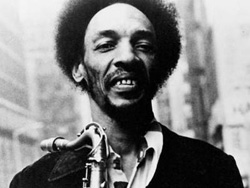 He formed his own quartet with pianist Hal Galper, and played on his first Blue Note recording session with pianist/composer Tadd Dameron. In 1959, he began playing with 13-year-old Tony Williams. It was about this time that Rivers became involved in the avant-garde. He developed a free improvisation group with Williams. Perhaps befitting his educational background, Rivers approached free jazz from more of a classical perspective, in contrast to the style of his contemporary, Ornette Coleman, who came out of the blues. In the early ’60s, Rivers became involved with Archie Shepp, Bill Dixon, Paul Bley, and Cecil Taylor, all members of the Jazz Composer’s Guild. In 1964, Rivers moved to New York. That July, Miles Davis hired Rivers on Tony Williams’ recommendation. The group played three concerts in Japan; one was recorded and the results released on an LP. In August of 1964, following the brief experience with Davis, Rivers played on Lifetime (Blue Note), Williams’ first album as a leader. Later that year, Rivers led his own session for Blue Note, Fuchsia Swing Song, which documented his inside/outside approach. Rivers led four more dates for Blue Note in the ’60s. In the middle part of the decade, he also recorded with Larry Young, Bobby Hutcherson, and Andrew Hill. In 1969, he toured Europe with Cecil Taylor in a band that also included Andrew Cyrille and Jimmy Lyons. In 1970, Rivers — along with his wife, Bea — opened a studio in Harlem where he held music and dance rehearsals. The space relocated to a warehouse in the Soho section of New York City. He formed his own quartet with pianist Hal Galper, and played on his first Blue Note recording session with pianist/composer Tadd Dameron. In 1959, he began playing with 13-year-old Tony Williams. It was about this time that Rivers became involved in the avant-garde. He developed a free improvisation group with Williams. Perhaps befitting his educational background, Rivers approached free jazz from more of a classical perspective, in contrast to the style of his contemporary, Ornette Coleman, who came out of the blues. In the early ’60s, Rivers became involved with Archie Shepp, Bill Dixon, Paul Bley, and Cecil Taylor, all members of the Jazz Composer’s Guild. In 1964, Rivers moved to New York. That July, Miles Davis hired Rivers on Tony Williams’ recommendation. The group played three concerts in Japan; one was recorded and the results released on an LP. In August of 1964, following the brief experience with Davis, Rivers played on Lifetime (Blue Note), Williams’ first album as a leader. Later that year, Rivers led his own session for Blue Note, Fuchsia Swing Song, which documented his inside/outside approach. Rivers led four more dates for Blue Note in the ’60s. In the middle part of the decade, he also recorded with Larry Young, Bobby Hutcherson, and Andrew Hill. In 1969, he toured Europe with Cecil Taylor in a band that also included Andrew Cyrille and Jimmy Lyons. In 1970, Rivers — along with his wife, Bea — opened a studio in Harlem where he held music and dance rehearsals. The space relocated to a warehouse in the Soho section of New York City. 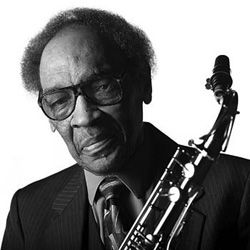 Named Studio Rivbea, the space became one of the most well-known venues for the presentation of new jazz. Rivers’ own Rivbea Orchestra rehearsed and performed there, as did his trio and his Winds of Change woodwind ensemble. Rivers’ trio of the time was a free improvisation ensemble in the purest sense. The group used no written music whatsoever, relying instead on a stream-of-consciousness approach that differed structurally from the head-solo-head style that still dominated free jazz. Much of this early- to mid-’70s music was documented on the Impulse! label. Named Studio Rivbea, the space became one of the most well-known venues for the presentation of new jazz. Rivers’ own Rivbea Orchestra rehearsed and performed there, as did his trio and his Winds of Change woodwind ensemble. Rivers’ trio of the time was a free improvisation ensemble in the purest sense. The group used no written music whatsoever, relying instead on a stream-of-consciousness approach that differed structurally from the head-solo-head style that still dominated free jazz. Much of this early- to mid-’70s music was documented on the Impulse! label.
In 1976, Rivers began an association with bassist Dave Holland. The duo recorded enough music for two albums, both of which were released on the Improvising Artists label. Opportunities to record became more scarce for Rivers in the late ’70s, though he did record occasionally, notably for ECM; his Contrasts album for the label was a highlight of his post-Blue Note work. In the ’80s, Rivers relocated to Orlando, FL, where he created a scene of his own. Rivers formed a new version of his Rivbea Orchestra, using local musicians who made their living playing in the area’s theme parks and myriad tourist attractions. The ’80s and ’90s found Rivers recording albums on his own Rivbea Sound label, as well as a pair of critically acclaimed big band albums for RCA.
By Chris Kelsey-allmusic.com
Posted in Artist of the Month | 6 Comments »
Wednesday, December 21st, 2011
 WNCU will ring in the new year with our yearly broadcast of Toast of the Nation. WNCU will ring in the new year with our yearly broadcast of Toast of the Nation.
It begins at 8pm on Dec. 31 and goes until 4am on Jan. 1 with an all-star lineup for the entire program.
8pm – The Julian Lage Trio with Larry Grenadier and Eric Harland
Live from Berklee Performance Center, Berklee College of Music, Boston, produced by WGBH Boston.
9pm – Highlights from the Newport Jazz Festival
10pm – A Tribute to Billy Taylor Featuring Music Director Geri Allen, Toshiko Akiyoshi, Cyrus Chestnut, Danilo Perez, Christian Sands, trumpeter Terence Blanchard, vocalist Carmen Lundy and more…From the Eisenhower Theater of the John F. Kennedy Center for the Performing Arts in Washington, DC.
11pm – Wynton Marsalis
Live from Dizzy’s Club Coca-Cola at Jazz at Lincoln Center, with a special
12:30am – Sing The Truth! Lizz Wright, Angelique Kidjo, and Dianne Reeves
From the 2011 Detroit Jazz Festival, the music of Mahalia Jackson, Miriam Makeba, Tracy Chapman, Ani DiFranco, Abbey Lincoln, Odetta and more, Musical Director TERRI LYNE CARRINGTON.
1:30am – The Junior Mance Quintet
From Boppin’ at the Vineyard with KUVO, Denver.
2am – The Billy Childs Quartet with Bob Sheppard, Tim Lefevbre and Gary Novak
Live from The Blue Whale in Los Angeles with MC Dee Dee Bridgewater of JazzSet.
3:30am – Highlights from Newport
4am – Julian Lage, Larry Grenadier, Eric Harland in Boston
5am – The Party’s Over Wbgo Repeats Toast of the Nation New Year’s Day
Posted in Music News | 3 Comments »
Thursday, December 1st, 2011
Saturday, December 24
Get ready for an entire day of holiday music produced by your favorite weekly hosts. Be prepared for some weird, funny, off beat, and funky holiday music.
8 a.m. – 12 p.m., Holiday Jazz from WNCU
12 p.m. – 4 p.m., 8 Track Flashback with Jim Davis
4 p.m. – 7 p.m., Funk Show with Howard Burchette
7 p.m. – 10 p.m., Bull City Blues with Dave Tripp
10 p.m. – overnight, Jazz with Bob Parlocha
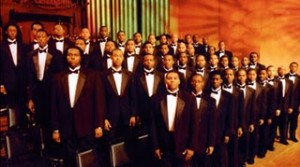 Sunday, December 25 Sunday, December 25
6 a.m. – 12 p.m., Holiday Gospel Live with hosts Brother Walter Hatcher and Carolyn Satterfield
12 p.m. – 1 p.m., Christmas with the Morehouse/Spelman Glee Clubs Special
One of the great holiday traditions in America, the choirs of Morehouse and Spelman Colleges. Two of the most prestigious historically black institutions in the nation get together to present a spine-tingling concert program. This year’s program features the best works of the last several years. It’s a joyous celebration of the schools’ tradition of singing excellence, with their trademark mixture of spirituals and carols. Korva Coleman will host.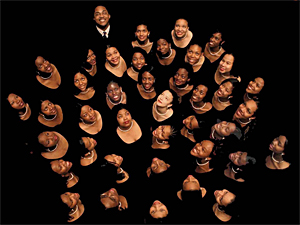
1 p.m. – 2 p.m., A Child is Born: Geri Allen Piano
From Peabody award-winning producer Jim Luce, this is a spiritual celebration of Christmas with jazz pianist Geri Allen and her new recording, A Child is Born, featuring Geri on the fazioli piano. Special appearances by Dr. Dwight Andrews, composer, musician, educator, and minister; Kunle Mwanga, producer; Kabuya Pamela Bowens, artist and creator of the “Black Madonna” and others. Jim Luce will host.
2 p.m. – 3 p.m., Holiday Jazz from WNCU
3 p.m. – 4 p.m., Jazz Piano Christmas #22
NPR Music is onstage once again at the John F. Kennedy Center for the Performing Arts for another live incarnation of one of our most popular programs. This year’s Jazz Piano Christmas features jazz greats Monty Alexander, Helio Alves, Freddy Cole, Renee Rosnes, and Jessica Williams. Felix Contreras will host.
4 p.m. – 6 p.m., Holiday Jazz
6 p.m. – 7 p.m., Marian McPartland’s Piano Jazz
7 p.m. – 10 p.m., Holiday Jazz from WNCU
10 p.m. – overnight, Jazz with Bob Parlocha
Monday, December 26
Regular program schedule returns
Posted in Music News | 1 Comment »
Thursday, December 1st, 2011
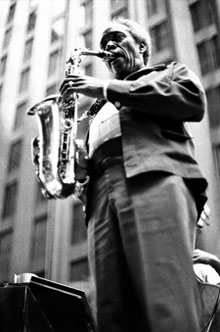 Edward “Sonny” Stitt (February 2, 1924–July 22, 1982) was an American jazz saxophonist. He was a quintessential saxophonist of the bebop idiom. He was also one of the most prolific saxophonists, recording over 100 records in his lifetime. He was nicknamed the “Lone Wolf” by jazz critic Dan Morgenstern, due to his relentless touring and his devotion to jazz. Edward “Sonny” Stitt (February 2, 1924–July 22, 1982) was an American jazz saxophonist. He was a quintessential saxophonist of the bebop idiom. He was also one of the most prolific saxophonists, recording over 100 records in his lifetime. He was nicknamed the “Lone Wolf” by jazz critic Dan Morgenstern, due to his relentless touring and his devotion to jazz.
Stitt was born in Boston, Massachusetts, and grew up in Saginaw, Michigan. Stitt had a musical background; his father taught music, his brother was a classically trained pianist, and his mother was a piano teacher. His earliest recordings were from 1945, with Stan Getz and Dizzy Gillespie. He had also experienced playing in some swing bands, though he mainly played in bop bands. Stitt featured in Tiny Bradshaw’s big band in the early forties.
Stitt played alto saxophone in Billy Eckstine’s big band alongside future bop pioneers Dexter Gordon and Gene Ammons from 1945 until 1949, when he started to play tenor saxophone more frequently. Later on, he notably played with Gene Ammons and Bud Powell. Stitt spent time in a Lexington prison between 1948-49 on account of selling narcotics.
Stitt, when playing tenor saxophone, seemed to break free from some of the criticism that he was apeing jazz genius Charlie Parker’s style. When alto saxophonist Gene Quill was criticised for playing too similar to Parker once by a jazz writer he retorted, “You try imitating Charlie Parker!” Indeed, Stitt began to develop a far more distinctive sound on tenor. He played with other bop musicians Bud Powell and Eddie “Lockjaw” Davis, a fellow tenor with a distinctly tough tone in comparison to Stitt, in the 1950s and recorded several albums for the burgeoning Prestige Records label as well as for Argo, Verve and Roost. Stitt’s playing is said to be at its zenith on these now rare records. Stitt experimented with Afro-Cuban jazz in the late 1950s, and the results can be heard on his recordings for Roost and Verve, on which he teamed up with Thad Jones and Chick Corea for Latin versions of such standards as “Autumn Leaves.”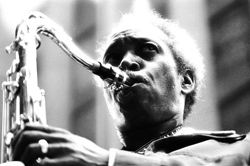
Stitt joined Miles Davis briefly in 1960, and his sole performance with the 1960 quintet is on the record Live at Stockholm, which featured Wynton Kelly, Jimmy Cobb and Paul Chambers. However, Miles fired him due to the excessive drinking habit he had developed, and replaced him with fellow tenor saxophonist Hank Mobley. Stitt, later in the 1960s paid homage to one of his main influences, Charlie Parker, on the seminal cut “Stitt Plays Bird”, which features Jim Hall on guitar. He recorded a number of memorable records with his friend and fellow saxophonist Gene Ammons. The records recorded by these two saxophonists are regarded by many as some of both Ammons and Stitt’s best work, thus the Ammons/Stitt partnership went down in posterity of the best duelling partnerships in jazz, alongside Zoot Sims & Al Cohn, and Johnny Griffin with Eddie “Lockjaw” Davis. Stitt would venture into soul jazz, and he recorded with fellow tenor great Booker Ervin in 1964 on the enjoyable Soul People album. Stitt would also record with Duke Ellington alumnus Paul Gonsalves during the 1960’s.
In the 1970s, Stitt slowed his recording output, though not by much and in 1972, he produced another classic, Tune Up, which was and still is regarded by many jazz critics, such as Scott Yanow, as his definitive record. Indeed, his fiery and ebullient soloing was quite reminiscent of his earlier playing.
Stitt was one of the first jazz musicians to experiment with an electric saxophone (the instrument was called a Varitone) in the late ’60s. Because the device distorted Stitt’s glorious, uncluttered, pure yet embodied sound, critics and Stitt followers were relieved when he eventually discarded the gratuitous gadget.
Stitt, to his credit, never slowed down, joining the Giants of Jazz (which included Art Blakey, Dizzy Gillespie and Thelonious Monk) on some albums for the Mercury Records label, and recording sessions for Cobblestone and other labels. His last recordings were made in Japan. Sadly in 1982, Stitt suffered a heart attack, and he died on July 22.
Although his playing was at first heavily inspired by Charlie Parker and Lester Young, Stitt eventually developed his own style, one which influenced John Coltrane. Stitt was especially effective with blues and with ballad pieces such as “Skylark”.
This bio was originally published on allaboutjazz.com.
Posted in Artist of the Month | 9 Comments »
Wednesday, November 16th, 2011
Jazz at Lincoln Center has plans to expand abroad, creating a new jazz club in Doha, Qatar, and four other cities as part of an unusual partnership with the St. Regis chain of luxury hotels.
The new club opening in Doha, the capital city, next April will be the first time this nonprofit New York City jazz organization, known for presenting high-quality concerts and education programs at its Columbus Circle home, has established a permanent subsidiary abroad.
The 120-seat club is being built as part of a new $1 billion luxury hotel going up in Doha and will be modeled on Dizzy’s Club Coca-Cola in Manhattan, with the same curved interior walls, open sightlines, superb acoustics and glass exterior wall with a vista, except that it will overlook the Persian Gulf instead of Central Park.
With a small population and immense wealth from oil and gas reserves, Qatar has evolved into a cultural hub in the Middle East, as the ruling monarchy has invested money in education and the arts in an effort to diversify its economy. In 2008 the government opened the Museum of Islamic Art, a zigguratlike structure of white stone designed by I. M. Pei, and an orchestra, the Qatar Philharmonic, was formed in Doha. Last year the Mathaf: Arab Museum of Modern Art opened, with 6,000 works. For the past three years the Tribeca Film Festival has run a festival in Doha, which has a small pop music scene, including some jazz.
The Doha club is only the start, said Adrian Ellis, the executive director of Jazz at Lincoln Center. The group has reached an agreement with St. Regis Hotels and Resorts to open four more clubs in new hotels being built around the world over the next five years, though deals on specific sites have yet to be negotiated.
The Doha deal carries little risk for Jazz at Lincoln Center; the group will receive a percentage of ticket sales for booking jazz acts for the new space, as well as a percentage of the food and beverage sales.
For its part, St. Regis Hotels has persuaded a private developer in Qatar, Omar Alfardan, to invest $20 million to build the club, which will be called Jazz at Lincoln Center Doha. The hotel chain, owned by Starwood Hotels and Resorts Worldwide, will employ the staff of the club and pay the fees and travel expenses for the musicians.
Mr. Ellis said the revenue from the Doha club would help support the organization’s educational programs, like the annual Essentially Ellington high school band competition and the Middle School Jazz Academy. The group has a $40 million operating budget, of which about $22 million comes from ticket sales, advertising and other earnings. Mr. Ellis estimated that the partnership with St. Regis Hotels would bring in an additional $1.5 million a year in earnings within five years, not counting the contributions Jazz at Lincoln Center might collect from Qatar’s well-heeled philanthropists if the program there becomes popular.
“For us it’s a contribution back to the bottom line,” he said. “We have a vast array of education programs and related programs that don’t generate a surplus, so we are always looking for new sources of income to support those. But it’s also about reaching new audiences.”
Wynton Marsalis, the virtuoso trumpet player who has long been the artistic director of Jazz at Lincoln Center, said the financial windfall mattered less than the opportunity to spread American culture and to introduce new audiences to jazz.
He said he would initially focus on sending musicians to Doha who are comfortable playing the role of cultural ambassador. The first showcases will have educational themes, he said, highlighting, for instance, important players from New Orleans or different periods in jazz history.
“When we work with our partners, it’s not cut-throat, cold-blooded business deals that we are trying to strike,” he said. “We are trying to strike mutually beneficial deals that allow us to prosper in a community sense.”
Paul James, the global brand leader for St. Regis Hotels, said the partnership fits well with his company’s attempt to use jazz to market its brand, tapping into the history of the original St. Regis Hotel, on East 55th Street, where jazz figures like Count Basie and Duke Ellington played during the height of the swing era.
The luxury chain has been expanding rapidly over the past four years, doubling the number of its hotels to 24. There are eight properties scheduled to open in the next six months, Mr. James said. Turning over the artistic programming at clubs in some hotels to Jazz at Lincoln Center makes good business sense, not only giving the hotel’s clubs a classy imprimatur but also ensuring that the musicians are first-rate, he said.
“You can make a jazz club, but you can’t make a Jazz at Lincoln Center jazz club,” Mr. James said. “That sense of quality and professionalism and the talent of that musician pool is untouchable.”
Mr. James said he approached Jazz at Lincoln Center about the possibility of a partnership in October 2010. The timing was fortunate, Mr. Ellis said. He and Mr. Marsalis had been talking to some of the organization’s board members about establishing a more permanent presence in other cities, replicating the acoustic experience audiences have had since Jazz at Lincoln Center moved into the Time Warner Center in 2004 and raised $131 million to build three high-tech performance spaces.
“St. Regis pitched us our idea,” Mr. Ellis said.
Mr. James said the pieces of the deal came together quickly because Mr. Alfardan, the real estate developer who owns the new hotel in Doha, is a jazz fan and eagerly embraced the proposal.
It is unclear where the future Jazz at Lincoln Center clubs will be built, Mr. James said. St. Regis has entered into talks with the owners and developers of several hotels in other American cities, China and Latin America.
Mr. Ellis said he was confident that at least four more clubs could be opened over the next five years, given the number of hotel projects in the St. Regis pipeline. If it is successful, the performance space in Doha could become a model for other partnerships with for-profit companies.
“If we are careful not to bite off more than we can chew, it could transform our business model,” Mr. Ellis said.
This article was originally published in The New York Times.
Posted in Music News | 5 Comments »
Monday, November 7th, 2011
Come join the top NCCU undergraduate and graduate student jazz instrumental and vocal performers in a great evening of jazz music!
Date: Tuesday, November 8, 2011
Time: 7-9 p.m.
Location: B.N. Duke Auditorium
Admission: Free
Posted in Music News | 6 Comments »
|
 The North Carolina Central University Art Museum is once again showcasing the work of Durham’s best and brightest young artists. “Durham’s Finest,” an annual exhibit of art created by Durham Public Schools students, will open on Sunday, Jan. 22, at 2 p.m.
The North Carolina Central University Art Museum is once again showcasing the work of Durham’s best and brightest young artists. “Durham’s Finest,” an annual exhibit of art created by Durham Public Schools students, will open on Sunday, Jan. 22, at 2 p.m. education for the school district. “It shows the progression and artistic development of the students.”
education for the school district. “It shows the progression and artistic development of the students.” Image #2: “City Girl” by Autumn Mullin
Image #2: “City Girl” by Autumn Mullin

 Every Tuesday at 8pm
Every Tuesday at 8pm Every Tuesday at 8:30pm
Every Tuesday at 8:30pm Few, if any, free jazz saxophonists have approached music with the same degree of intellectual rigor as Sam Rivers; just as few have managed to maintain a high level of creativity over a long life. Rivers plays with remarkable technical precision and a manifest knowledge of his materials. His sound is hard and extraordinarily well-centered, his articulation sharp, and his command of the tenor saxophone complete. Rivers’ playing sometimes has an unremitting seriousness that can be extremely demanding, even off-putting. Nevertheless, the depth of his artistry is considerable. Rivers is as substantial a player as avant-garde jazz has produced.
Few, if any, free jazz saxophonists have approached music with the same degree of intellectual rigor as Sam Rivers; just as few have managed to maintain a high level of creativity over a long life. Rivers plays with remarkable technical precision and a manifest knowledge of his materials. His sound is hard and extraordinarily well-centered, his articulation sharp, and his command of the tenor saxophone complete. Rivers’ playing sometimes has an unremitting seriousness that can be extremely demanding, even off-putting. Nevertheless, the depth of his artistry is considerable. Rivers is as substantial a player as avant-garde jazz has produced. He formed his own quartet with pianist Hal Galper, and played on his first Blue Note recording session with pianist/composer Tadd Dameron. In 1959, he began playing with 13-year-old Tony Williams. It was about this time that Rivers became involved in the avant-garde. He developed a free improvisation group with Williams. Perhaps befitting his educational background, Rivers approached free jazz from more of a classical perspective, in contrast to the style of his contemporary, Ornette Coleman, who came out of the blues. In the early ’60s, Rivers became involved with Archie Shepp, Bill Dixon, Paul Bley, and Cecil Taylor, all members of the Jazz Composer’s Guild. In 1964, Rivers moved to New York. That July, Miles Davis hired Rivers on Tony Williams’ recommendation. The group played three concerts in Japan; one was recorded and the results released on an LP. In August of 1964, following the brief experience with Davis, Rivers played on Lifetime (Blue Note), Williams’ first album as a leader. Later that year, Rivers led his own session for Blue Note, Fuchsia Swing Song, which documented his inside/outside approach. Rivers led four more dates for Blue Note in the ’60s. In the middle part of the decade, he also recorded with Larry Young, Bobby Hutcherson, and Andrew Hill. In 1969, he toured Europe with Cecil Taylor in a band that also included Andrew Cyrille and Jimmy Lyons. In 1970, Rivers — along with his wife, Bea — opened a studio in Harlem where he held music and dance rehearsals. The space relocated to a warehouse in the Soho section of New York City.
He formed his own quartet with pianist Hal Galper, and played on his first Blue Note recording session with pianist/composer Tadd Dameron. In 1959, he began playing with 13-year-old Tony Williams. It was about this time that Rivers became involved in the avant-garde. He developed a free improvisation group with Williams. Perhaps befitting his educational background, Rivers approached free jazz from more of a classical perspective, in contrast to the style of his contemporary, Ornette Coleman, who came out of the blues. In the early ’60s, Rivers became involved with Archie Shepp, Bill Dixon, Paul Bley, and Cecil Taylor, all members of the Jazz Composer’s Guild. In 1964, Rivers moved to New York. That July, Miles Davis hired Rivers on Tony Williams’ recommendation. The group played three concerts in Japan; one was recorded and the results released on an LP. In August of 1964, following the brief experience with Davis, Rivers played on Lifetime (Blue Note), Williams’ first album as a leader. Later that year, Rivers led his own session for Blue Note, Fuchsia Swing Song, which documented his inside/outside approach. Rivers led four more dates for Blue Note in the ’60s. In the middle part of the decade, he also recorded with Larry Young, Bobby Hutcherson, and Andrew Hill. In 1969, he toured Europe with Cecil Taylor in a band that also included Andrew Cyrille and Jimmy Lyons. In 1970, Rivers — along with his wife, Bea — opened a studio in Harlem where he held music and dance rehearsals. The space relocated to a warehouse in the Soho section of New York City.  Named Studio Rivbea, the space became one of the most well-known venues for the presentation of new jazz. Rivers’ own Rivbea Orchestra rehearsed and performed there, as did his trio and his Winds of Change woodwind ensemble. Rivers’ trio of the time was a free improvisation ensemble in the purest sense. The group used no written music whatsoever, relying instead on a stream-of-consciousness approach that differed structurally from the head-solo-head style that still dominated free jazz. Much of this early- to mid-’70s music was documented on the Impulse! label.
Named Studio Rivbea, the space became one of the most well-known venues for the presentation of new jazz. Rivers’ own Rivbea Orchestra rehearsed and performed there, as did his trio and his Winds of Change woodwind ensemble. Rivers’ trio of the time was a free improvisation ensemble in the purest sense. The group used no written music whatsoever, relying instead on a stream-of-consciousness approach that differed structurally from the head-solo-head style that still dominated free jazz. Much of this early- to mid-’70s music was documented on the Impulse! label. WNCU will ring in the new year with our yearly broadcast of Toast of the Nation.
WNCU will ring in the new year with our yearly broadcast of Toast of the Nation. Sunday, December 25
Sunday, December 25
 Edward “Sonny” Stitt (February 2, 1924–July 22, 1982) was an American jazz saxophonist. He was a quintessential saxophonist of the bebop idiom. He was also one of the most prolific saxophonists, recording over 100 records in his lifetime. He was nicknamed the “Lone Wolf” by jazz critic Dan Morgenstern, due to his relentless touring and his devotion to jazz.
Edward “Sonny” Stitt (February 2, 1924–July 22, 1982) was an American jazz saxophonist. He was a quintessential saxophonist of the bebop idiom. He was also one of the most prolific saxophonists, recording over 100 records in his lifetime. He was nicknamed the “Lone Wolf” by jazz critic Dan Morgenstern, due to his relentless touring and his devotion to jazz.
